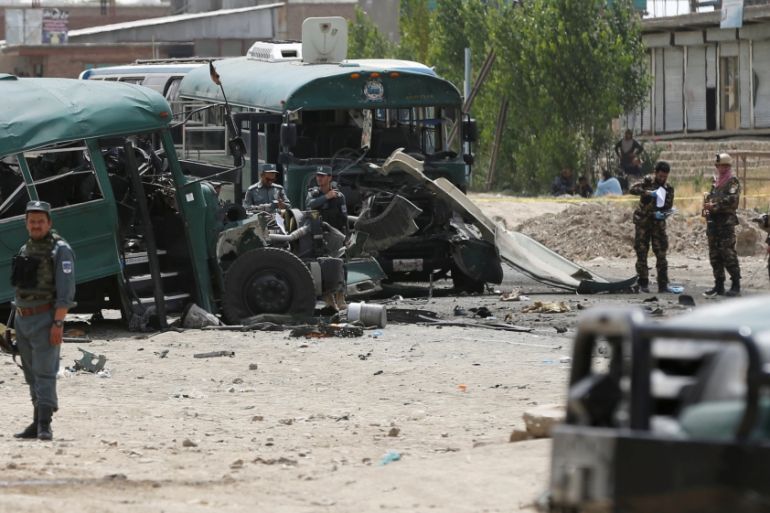SIGAR report: Taliban gained territory in Afghanistan
US watchdog says area under Kabul government’s “influence” shrank by nearly 5 percent since beginning of this year.

The Afghan government has lost control of nearly 5 percent of its territory to the Taliban since the beginning of this year, according to a report by the US government’s top watchdog on Afghanistan.
Published on Friday by the Special Inspector General for Afghanistan Reconstruction (SIGAR), the report says the area under Afghan government “control or influence” decreased to 65.6 percent by the end of May from 70.5 percent last year, based on data provided by US forces in Afghanistan.
Keep reading
list of 4 itemsPhotos: Tourist numbers up in post-war Afghanistan
Taliban ban on girls’ education defies both worldly and religious logic
Afghanistan calls for ‘respect’ after Cricket Australia snub
That accounts to a loss of 19 of the country’s approximately 400 governing districts.
The commander of US forces in Afghanistan, Army General John Nicholson, said most of the areas the Taliban control were rural.
READ MORE: Afghanistan: Surge in civilian, children death tolls
“They believed they were going to be able to seize and hold terrain, and they failed to do so,” Nicholson told a Pentagon briefing via video link on Thursday.
Afghan officials, however, say the exact figure cannot be measured as the fight against the Taliban and other armed groups is still ongoing.
“It’s not just the Taliban but many other insurgent groups in Afghanistan battling to gain territory, and we are fighting to push them back, so we cannot really measure how many areas are in control of the Taliban or other insurgent groups,” General Dawlat Waziri, spokesperson for the Afghan defence ministry, told Al Jazeera on Friday from Kabul.
“However, we can confirm that the Taliban seems to be present mostly in rural districts and not in strategic cities of the country.”
The US has been training and equipping Afghan security forces in order to withdraw American troops from the country, but the Afghans remain short of personnel and hardware.
|
|
The report cited US forces in Afghanistan as saying the loss of control was because Afghan forces were redeployed from lower-priority areas to “conduct offensive operations, gain and maintain the initiative, exploit opportunities, and consolidate tactical gains”.
Acknowledging that security in Afghanistan remained precarious and Taliban forces had gained ground in some places, US President Barack Obama plans to leave 8,400 American troops in Afghanistan at the end of his term – an increase from his previous plan, reflecting the difficulty of drawing down the US presence in the country.
READ MORE: Civilians caught in crossfire of war against Taliban
Obama also approved US forces new authorities that enable them to accompany Afghan forces, while allowing greater use of US air power.
Previously, Nicholson, who commands both the NATO-led Resolute Support mission and a separate US counterterrorism mission, was permitted to take action against the Taliban only if “they pose an immediate threat to US or coalition forces, or if the Afghan forces face a catastrophic failure”.
The restrictions have not been lifted by the new authority.
Afghanistan remains one of the most heavily landmine-riddled countries in the world, after almost 40 years of conflict.
|
|
With additional reporting by Shereena Qazi, follow her on Twitter: @shereenaqazi